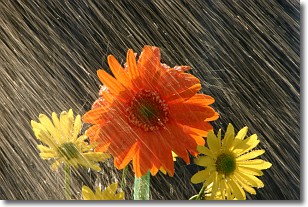Weather Alert in Colorado
Hydrologic Outlook issued May 8 at 1:46PM MDT by NWS Grand Junction CO
AREAS AFFECTED: Archuleta, CO; Delta, CO; Dolores, CO; Eagle, CO; Garfield, CO; Gunnison, CO; Hinsdale, CO; La Plata, CO; Montezuma, CO; Montrose, CO; Ouray, CO; Pitkin, CO; San Juan, CO; San Miguel, CO
DESCRIPTION: ESFGJT Risk of areal flooding and elevated stream flows from rapid snowmelt ...EXISTING CONDITIONS... Recent storms have brought several inches of new snow to mid to high elevations (8500' to 10,000') over the San Juans mountains, nosing along the Divide across Central Colorado. With forecast temperatures running 5 to 15 degrees above normal and the potential for showers and storms along the Divide each afternoon through the weekend, this region of western Colorado is vulnerable to enhanced runoff and elevated stream flows from rapid snowmelt. ...PRECIPITATION... Isolated to scattered showers and storms developing each afternoon favor high terrain across the southwest San Juans and along the spine of the Divide. Due to warming conditions, precipitation in the form of rain is possible as high as 10,000'. Although anticipated storm totals are low, generally 0.1" to 0.2", rain on snow could enhance the rate of snowmelt. ...STREAMFLOW CONDITIONS AND RUNOFF FORECASTS... Streams and rivers in the area will see elevated flows of dangerously cold water over the next several days. Low-lying areas across mountainous terrain (8500' to 10,000') are most susceptible to swelling of area streams and/or localized inundation. Stay away from fast moving water and exercise caution near riverbanks and streams. Updated weather and water products and forecasts are available from the NWS Grand Junction's website at: Www.weather.gov/gjt
INSTRUCTION: N/A
Want more detail? Get the Complete 7 Day and Night Detailed Forecast!
Current U.S. National Radar--Current
The Current National Weather Radar is shown below with a UTC Time (subtract 5 hours from UTC to get Eastern Time).

National Weather Forecast--Current
The Current National Weather Forecast and National Weather Map are shown below.

National Weather Forecast for Tomorrow
Tomorrow National Weather Forecast and Tomorrow National Weather Map are show below.

North America Water Vapor (Moisture)
This map shows recent moisture content over North America. Bright and colored areas show high moisture (ie, clouds); brown indicates very little moisture present; black indicates no moisture.

Weather Topic: What is Precipitation?
Home - Education - Precipitation - Precipitation
 Next Topic: Rain
Next Topic: Rain
Precipitation can refer to many different forms of water that
may fall from clouds. Precipitation occurs after a cloud has become saturated to
the point where its water particles are more dense than the air below the cloud.
In most cases, precipitation will reach the ground, but it is not uncommon for
precipitation to evaporate before it reaches the earth's surface.
When precipitation evaporates before it contacts the ground it is called Virga.
Graupel, hail, sleet, rain, drizzle, and snow are forms of precipitation, but fog
and mist are not considered precipitation because the water vapor which
constitutes them isn't dense enough to fall to the ground.
Next Topic: Rain
Weather Topic: What are Shelf Clouds?
Home - Education - Cloud Types - Shelf Clouds
 Next Topic: Sleet
Next Topic: Sleet
A shelf cloud is similar to a wall cloud, but forms at the front
of a storm cloud, instead of at the rear, where wall clouds form.
A shelf cloud is caused by a series of events set into motion by the advancing
storm; first, cool air settles along the ground where precipitation has just fallen.
As the cool air is brought in, the warmer air is displaced, and rises above it,
because it is less dense. When the warmer air reaches the bottom of the storm cloud,
it begins to cool again, and the resulting condensation is a visible shelf cloud.
Next Topic: Sleet
Current conditions powered by WeatherAPI.com




